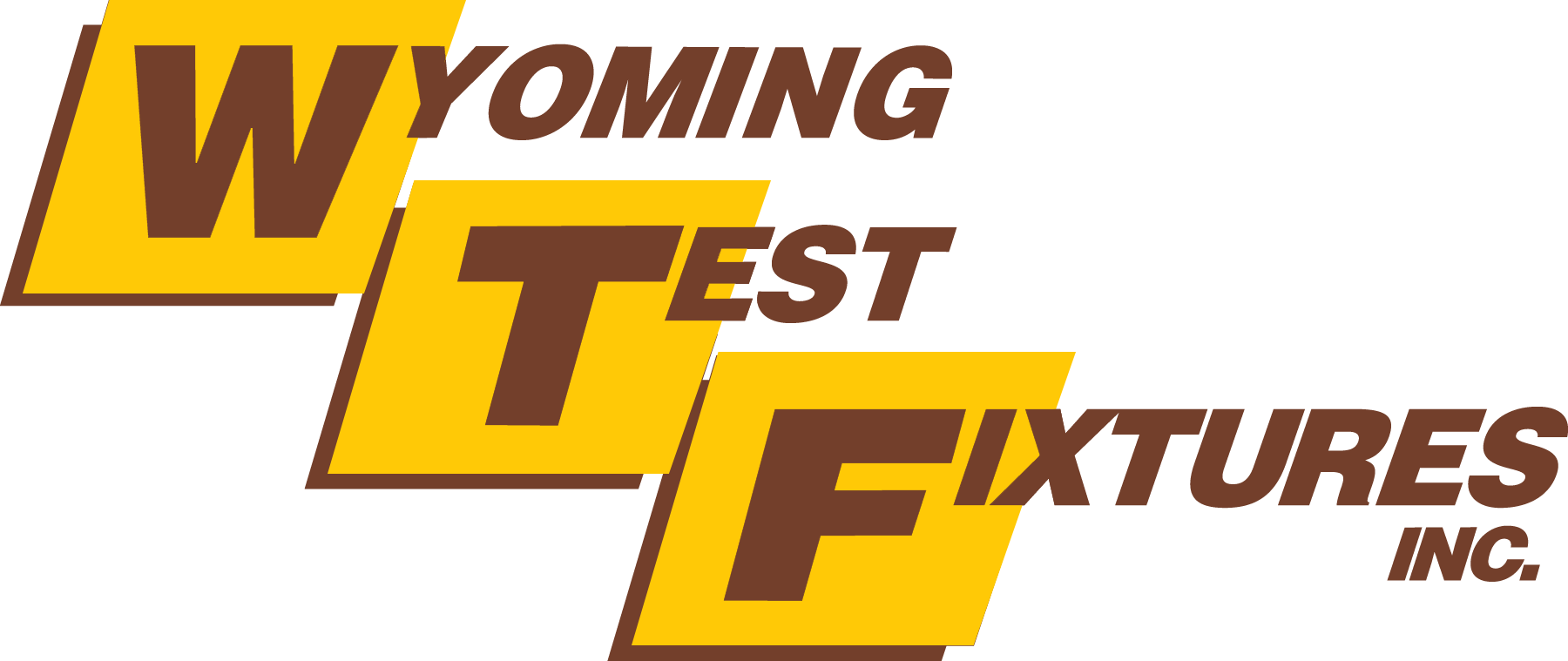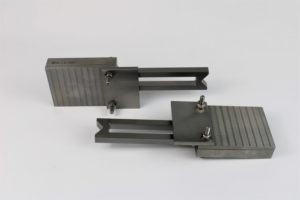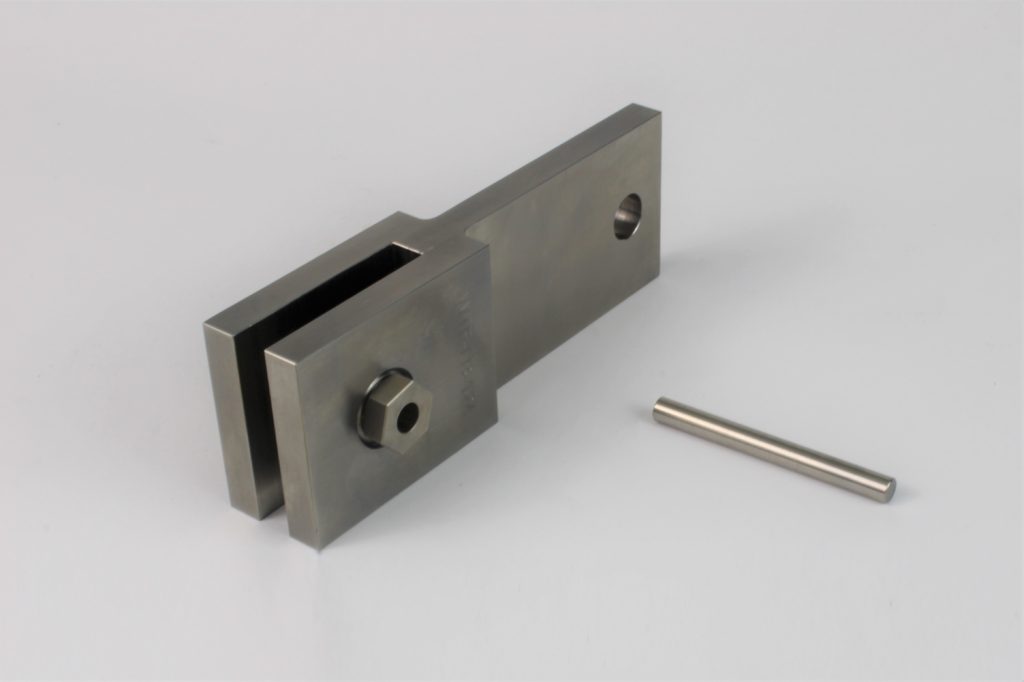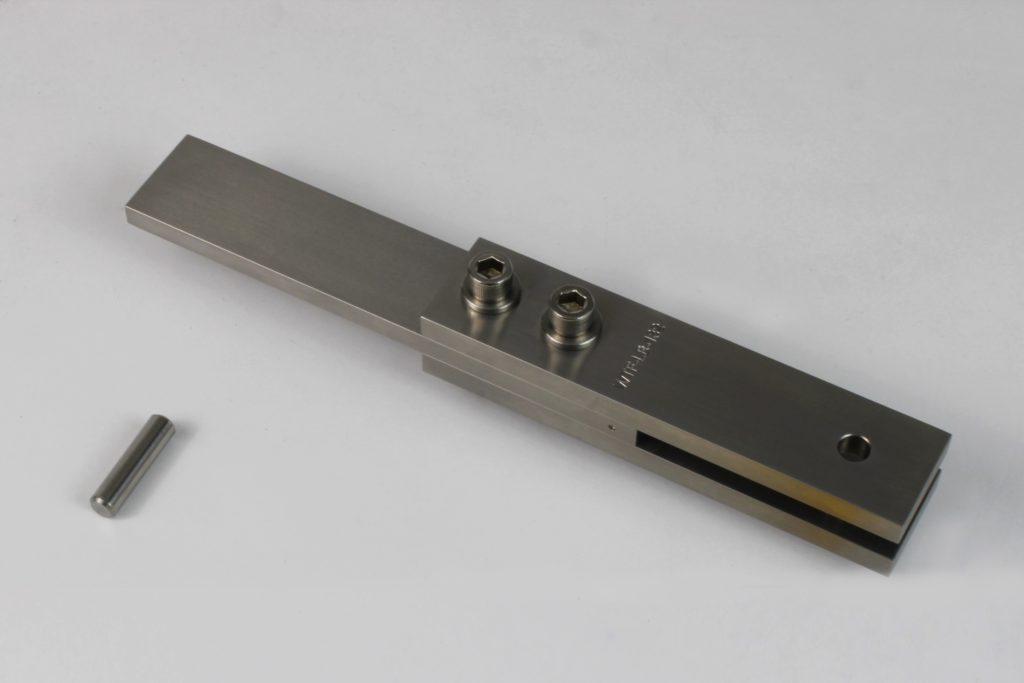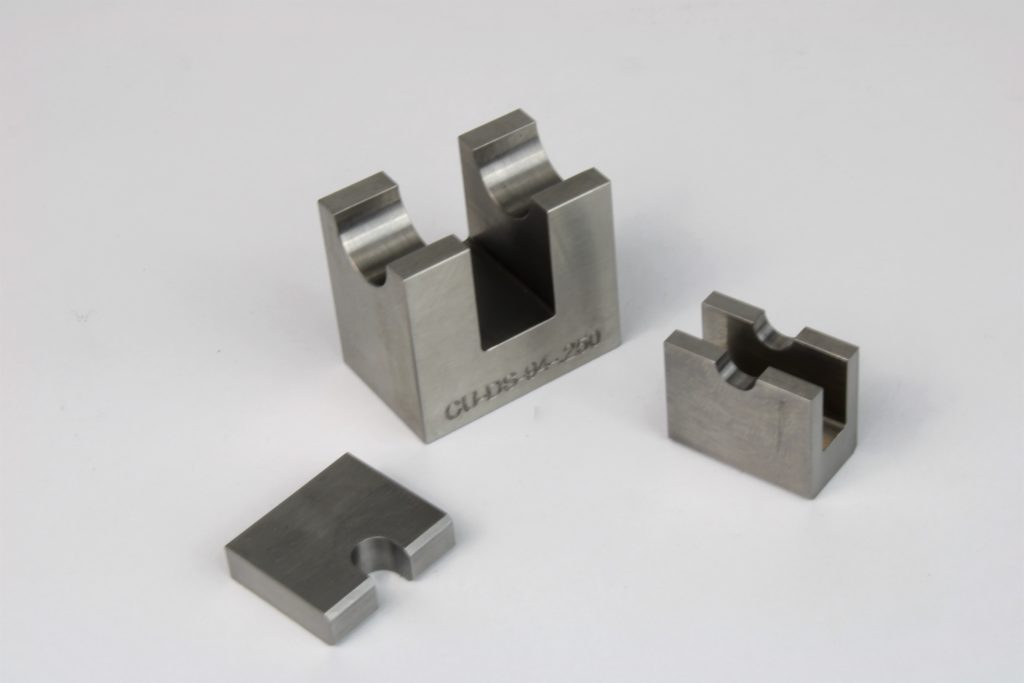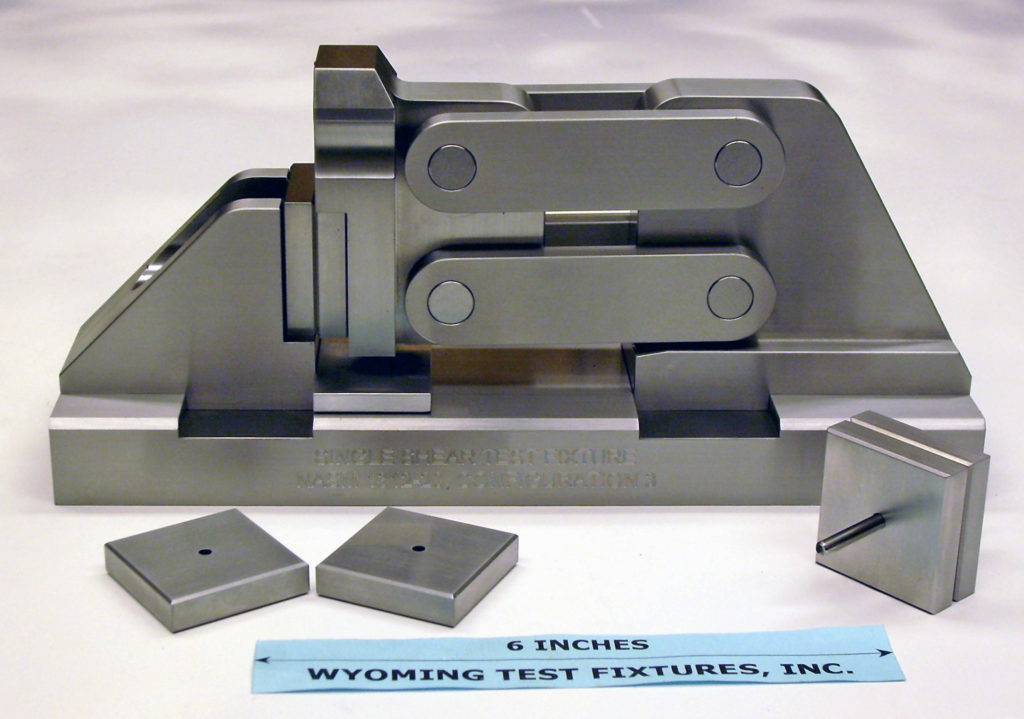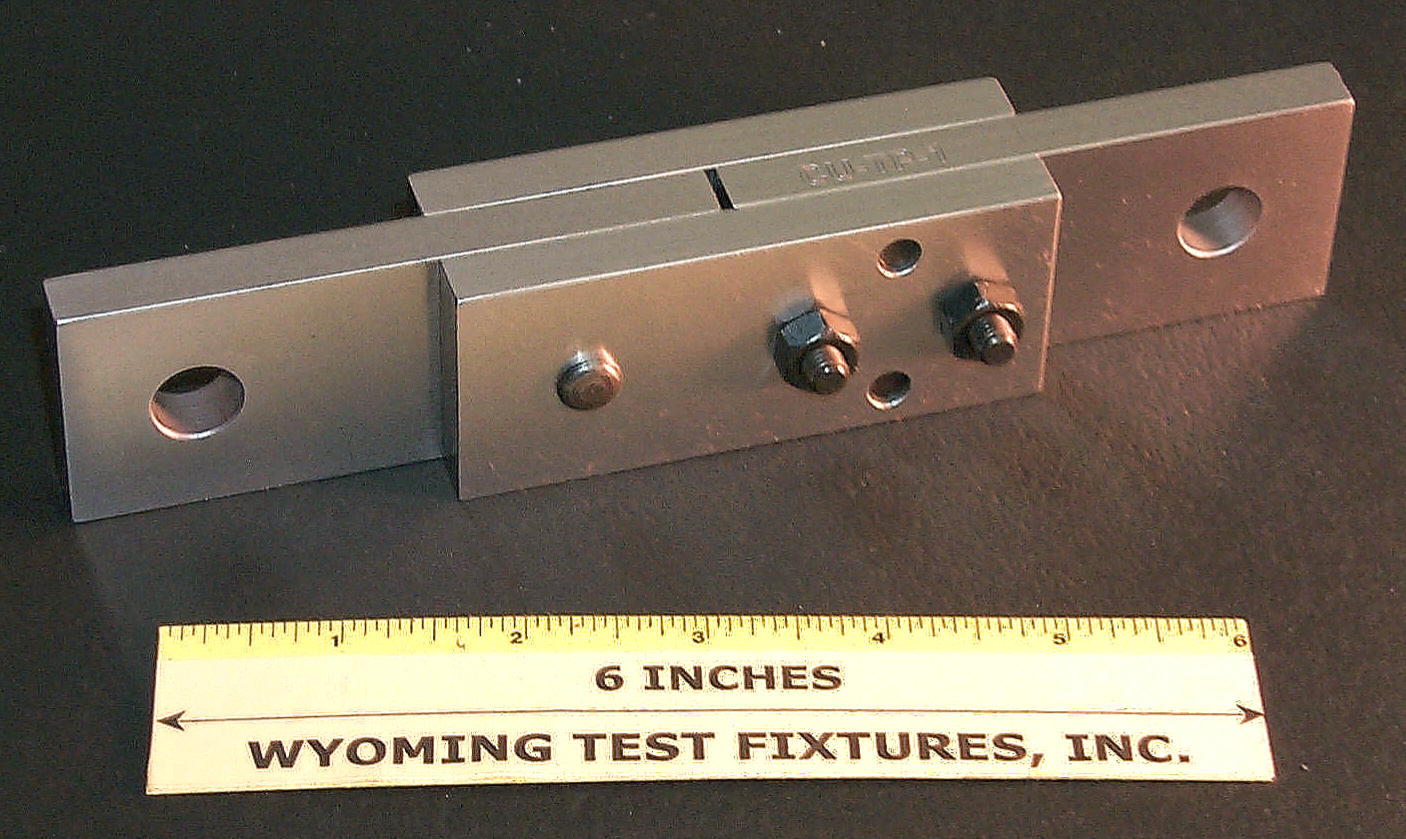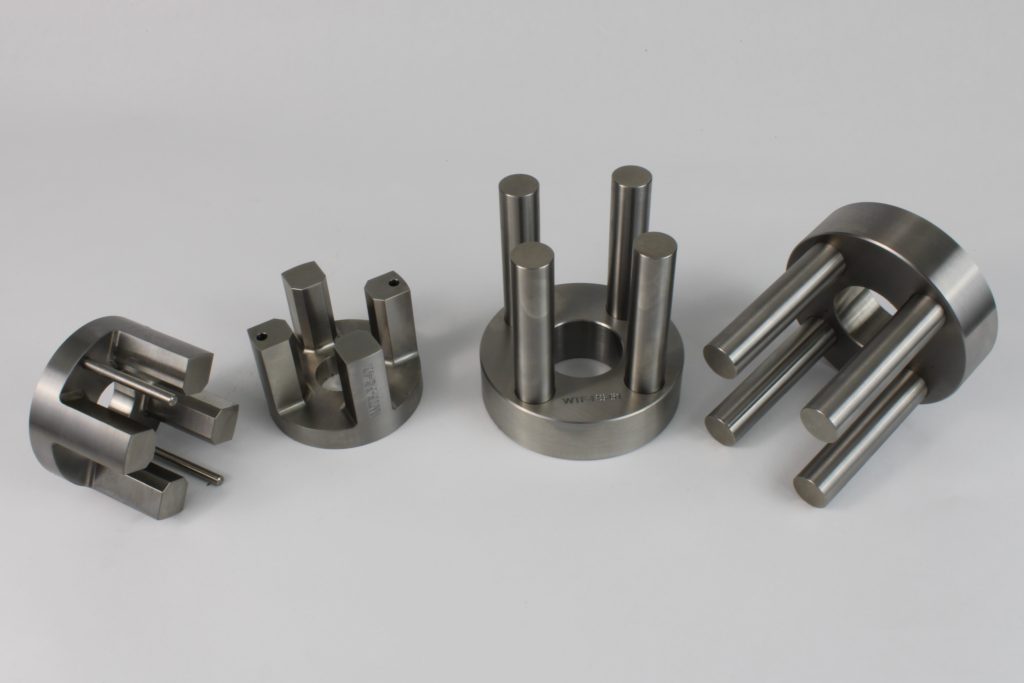Fastener Testing
Mechanically fastened joints are often used in structures, including composite structures, to transfer load from one component to another. The load is primarily transferred by bearing (contact) forces that develop between the fastener and the side of the hole in the structure, however testing is performed to assess the resistance of a material to other fastener-induced types of failure as well. In this section test fixtures used when performing standardized fastener tests are listed.
Standard Fixtures
H-1:Fastener Bearing Specimen Support Fixture
ASTM D5961, Procedure B
Procedure B of ASTM D5961 tests the bearing strength of a 1.5 in. wide test specimen assembly containing one or two ¼ in. diameter fasteners with either tensile or compressive loading. The fixture supplies lateral support for compression testing to counteract induced bending and gross buckling.
H-2:SACMA Bearing Strength Test Fixture
SACMA SRM 9-89
The SACMA Bearing Strength fixture tests double shear loading of a single pin and satisfies the requirements of ASTM D5961. This fixture incorporates bushings in housings that can be screwed in and out to accommodate specimens of varying thickness.
H-3:Laminate Bearing Strength Test Fixtures
ASTM D5961, Procedures A, C, D
ASTM Standard D5961 includes four distinct laminate bearing test methods (Procedures A-D). Procedure A tests double-shear tensile loading. Procedure C tests single-shear tensile loading. Procedure D tests double-shear compressive loading.
H-4:Pin Bearing Strength Test Fixture
ASTM D953
A relatively old method originally intended for testing rigid plastics, this fixture tests double shear of a single fastener. However, the specimen must either be a precise thickness or spaced in the fixture with shims.
H-5:Fastener Double Shear Test Fixtures
MIL-STD-1312-13 / NASM 1312-13
Used to test fasteners (typically metallic) of various types and sizes in double shear, this fixture consists of a hardened tool steel blade and a fastener support fork. Both parts have an accurately toleranced cutout matching the diameter of the fastener to be tested.
H-6:Fastener Single Shear Test Fixtures
MIL-STD-1312-20 / NASM 1312-20
Used to test fasteners (typically metallic) considered too short to be used in the double shear method specified MIL-STD-1312-13.
H-7:Three-plate Shear Test Fixture
Federal Test 406, Method 1041
This double shear test method is intended for use in determining the shear strength of a cylindrical specimen of plastic materials. It can be used to test any material that the fixture is strong enough to handle. For very high strength materials, such as high strength bolts, the Fastener Double Shear Test Fixture would be a better choice.
H-8:Fastener Pull-Through Strength Test Fixture
MIL-STD-1312-8A / ASTM D7332
Originally intended for use in determining the tensile strength of fasteners, this method has been broadened to include pull-through strength of mechanically fastened composite plates. Multiple different fixture configurations are currently in use, requiring different specimens with different amounts of preparation.
